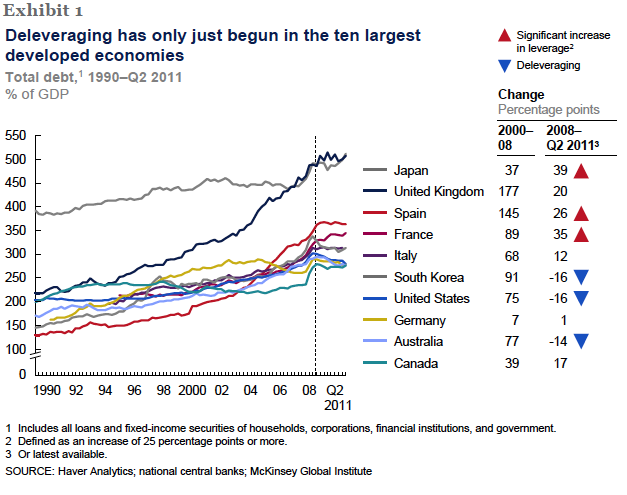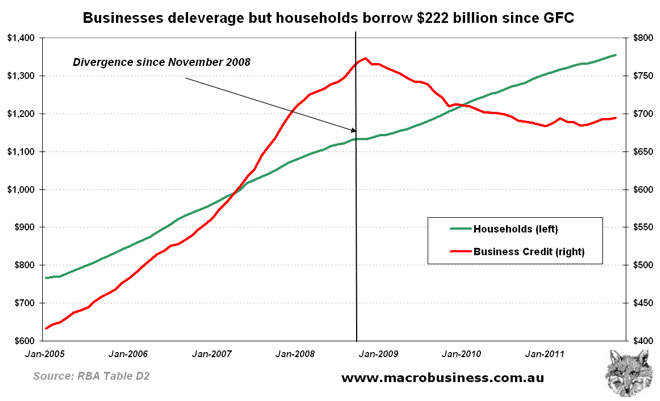We end the week with 2 charts from a recent report from the McKinsey Global Institute “Debt and deleveraging”, which provide elegant snapshots of “progress” of debt and deleveraging by the 10 largest “mature” global economies.
The first chart (but second in the report) shows the composition of debt by country. Notably Japan is leaps ahead by gross debt levels (but as argued later in the report at around Euro levels when netted off), as is the UK, mainly because of “The City”‘s insatiable diet for financial debt instruments:

Australia is near the bottom of this medal like tally – but note the total: some 277% of GDP vs Germany at 278% or the US at 279% or even Italy at 314%…..
I thought we had low debt? Yes, low gross government debt at only 21% of GDP, but in terms of household debt it is the largest of the list at 105% of GDP (as of Q2 2011), more than double that of most European countries. Further, our financial debt is also on a par with the European core, and actually double that of the United States.
But what about deleveraging?
The second chart, although busy graphically, shows that the change in debt in the UK, Spain and France since 2008 has been, well explosive, and only surpassed by the tremendous government stimulus (and huge structural deficit) by Japan since the GFC:

Before looking at the deleveraging since the GFC, note the change in debt in the runup: Australia is mid tier, having increased its debt position by 77% of GDP, alongside the likes of Italy and the United States, but still behind the front runner the UK.
Note that the US has deleveraged by 16% (by both households and businesses) whilst Australia has delevered by 14% of GDP. Although real GDP has improved, total debt levels have not fallen, and in particular household debt has increased by nearly a quarter of a trillion dollars since November 2008, whilst the only outright deleveraging has been done by corporate Australia:

The report is an insightful read and questions what progress can be made by economies saddled with debt – regardless of the composition:
Understanding the course of deleveraging will be of critical importance both to business leaders, who will need to take a granular approach to strategy, and to governments. The report examines implications for business strategy and suggests that current macroeconomic models do not fully capture the impact of deleveraging on demand—so companies must develop their own views of how deleveraging is proceeding to find pockets of opportunity in the near term.
Overall growth in the time of deleveraging is likely to be restrained, but the pace of debt reduction varies across nations and sectors and from place to place within nations. No single country has all the conditions in place to revive growth.